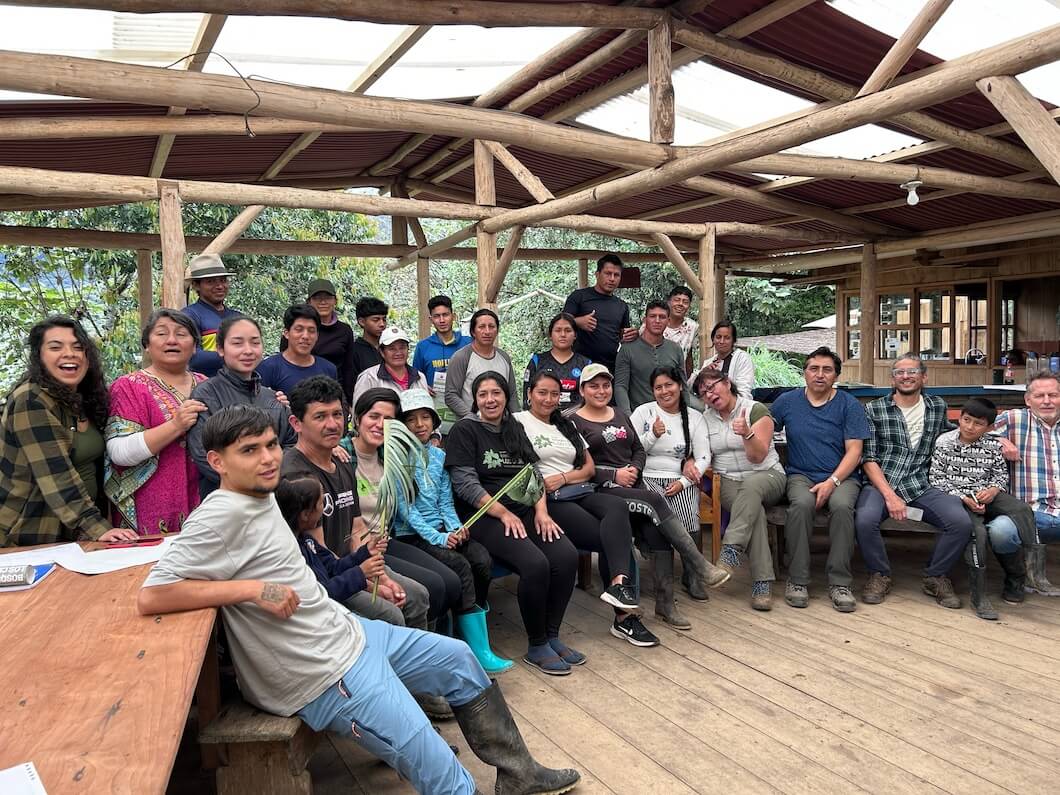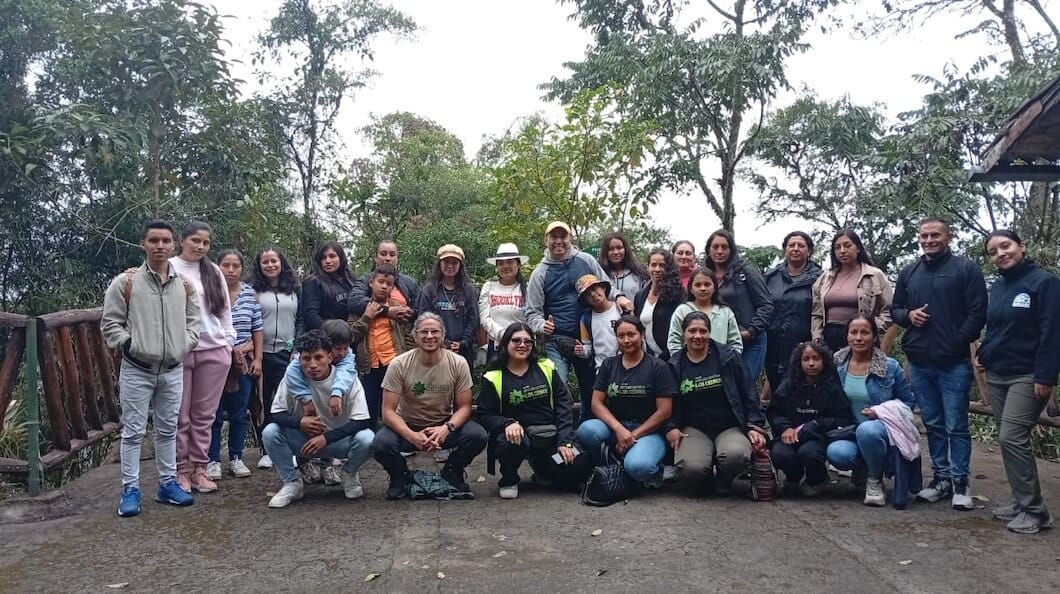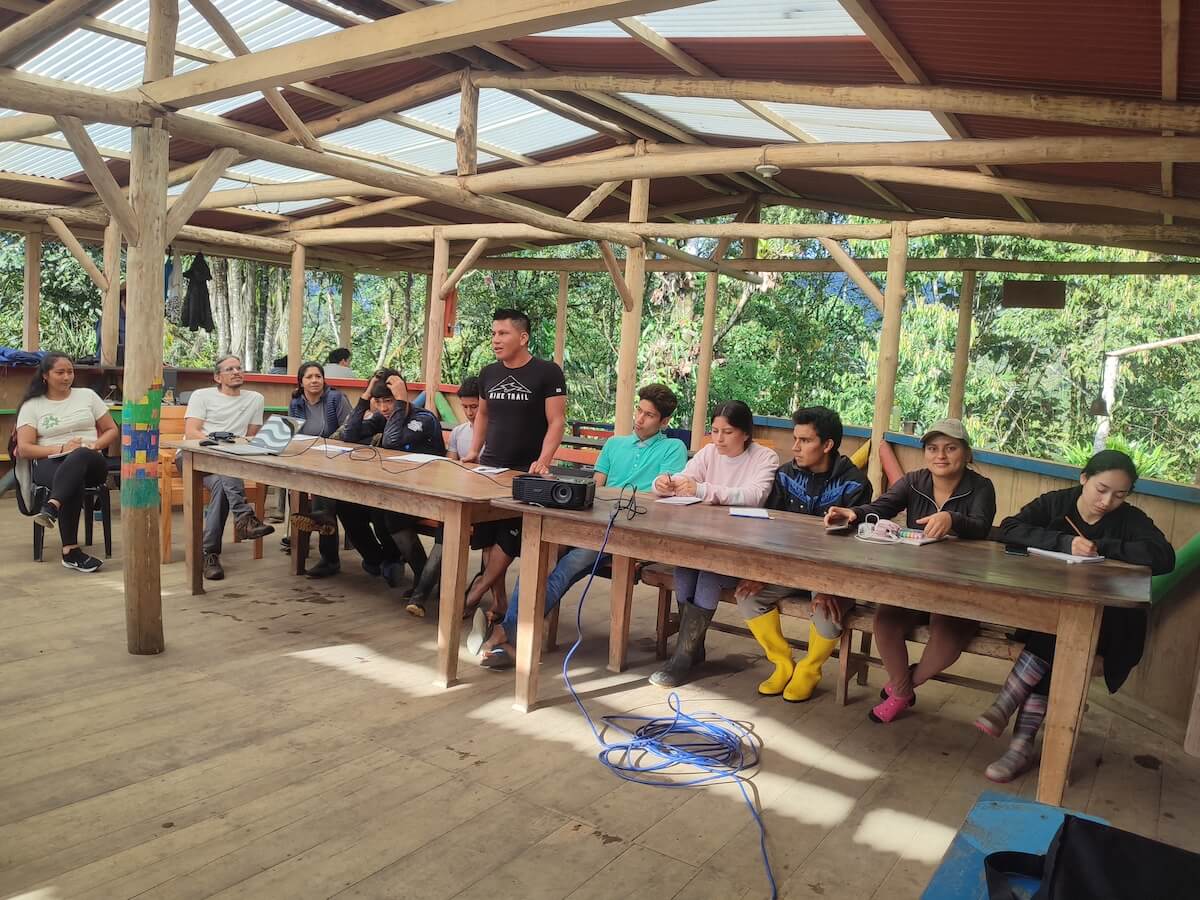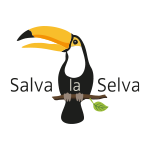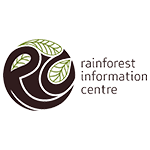by Monserratte Vásquez
Share
In November, we had a wonderful visit with students from the Biological Sciences program out of the Pontifical Catholic University of Ecuador as part of a field trip by the Natural Resources Management chair, led by PhD advisor and professor Dr. Rafael E. Cárdenas. Dr. Cárdenas is an important ally as a researcher and academic who has made valuable contributions to the conservation of the Los Cedros Protected Forest.
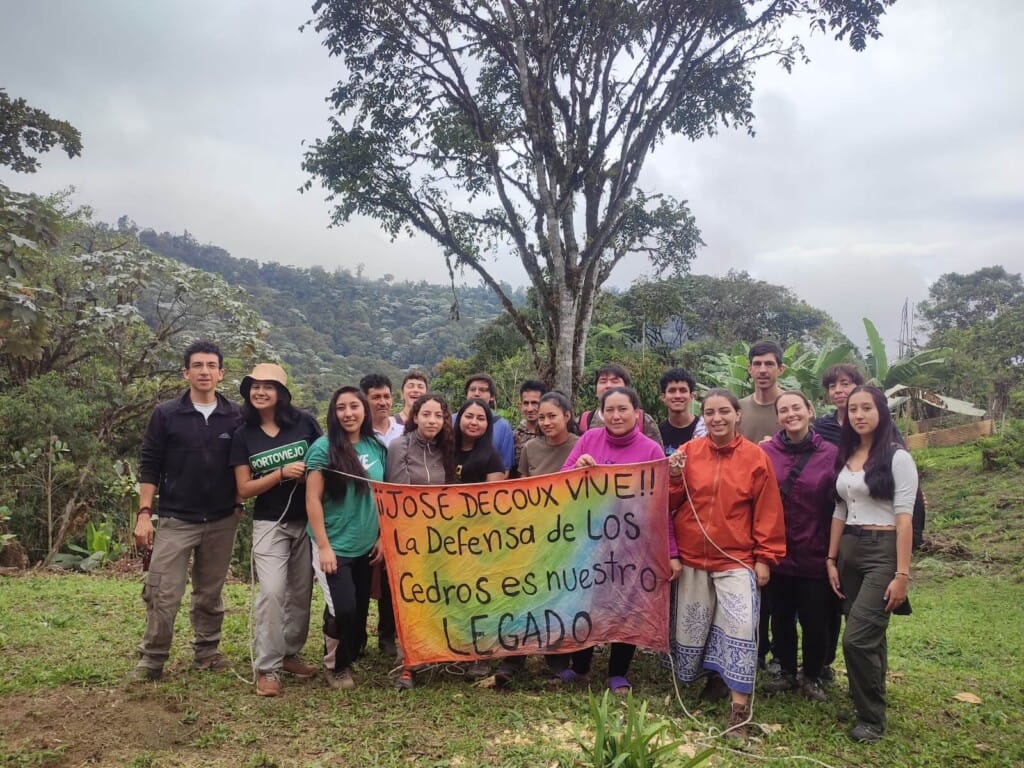
The visit’s objective was for the students to learn first-hand about the pressure placed on the last remnants of Ecuador’s northwestern cloud forest, who’s crucial to the Tumbes-Chocó-Magdalena and Tropical Andes biodiverse ecosystems. The presence of extractive logging and mining companies threatens the area, as does deforestation due to agriculture cutting out more and more of the forests surrounding Los Cedros.
With this objective in mind, the class hiked important routes such as the Inca, the Old Waterfall, and the Observatory trails. From the latter, you can see agricultural encroachment in the surrounding communities and the Central Manduriacu Hydroelectric Reservoir fed by the Guayllabamba River. All along these trails, under the guidance of local rangers, the students also learned about the ecological value of the incredible biodiversity that calls Los Cedros home.
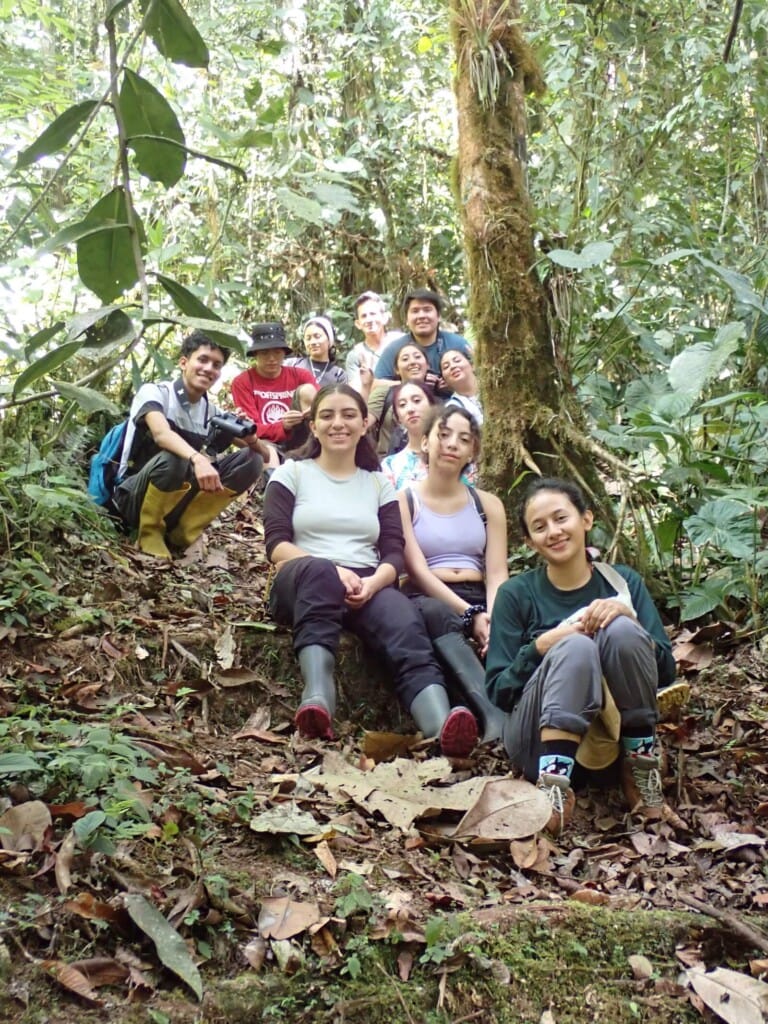
The nights were dedicated in part to reinforcing what they learned in the field through academic talks and listening to community representatives’ experiences in interactive spaces between the students and the Station’s operational staff. In these interactions, the students learned about the socio-environmental situation and the challenges in the area three years following the historic Constitutional Court ruling that freed Los Cedros from a mining concession that would have compromised more than 60% of the forest. Station staff shared the dynamics and judicial process strategies with the students, focusing on science and research’s relevance in achieving this important legal precedent in favor of Nature and rural communities.
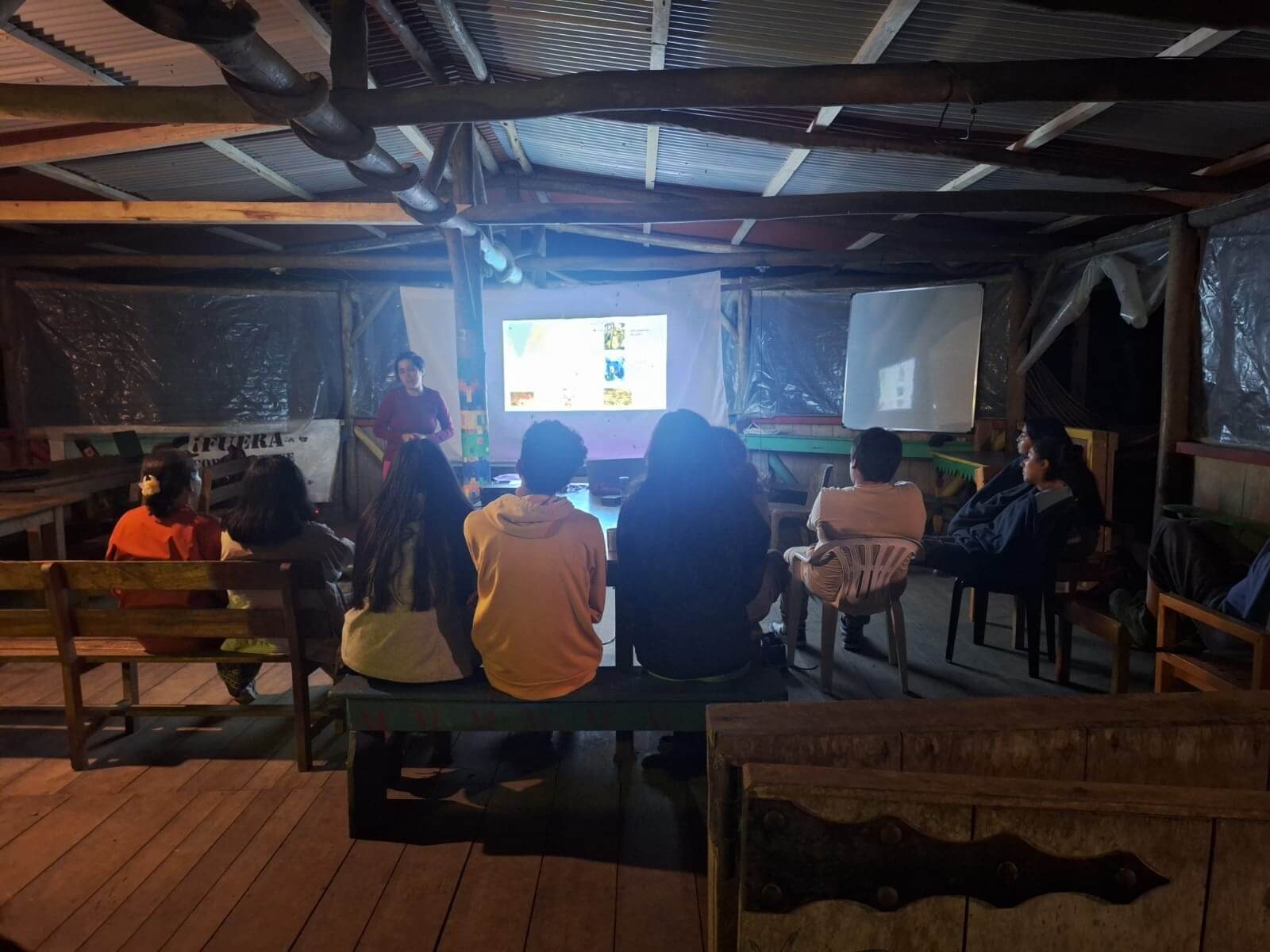
In this way, by combining theory with practice and scientific knowledge with social realities, Dr. Cárdenas sows a seed in the students so that they are motivated to contribute in their respective fields and futures—in dialogue and collaboration with local communities—to this great cause of conserving threatened ecosystems who carry out essential roles for the ecological balance on Earth.
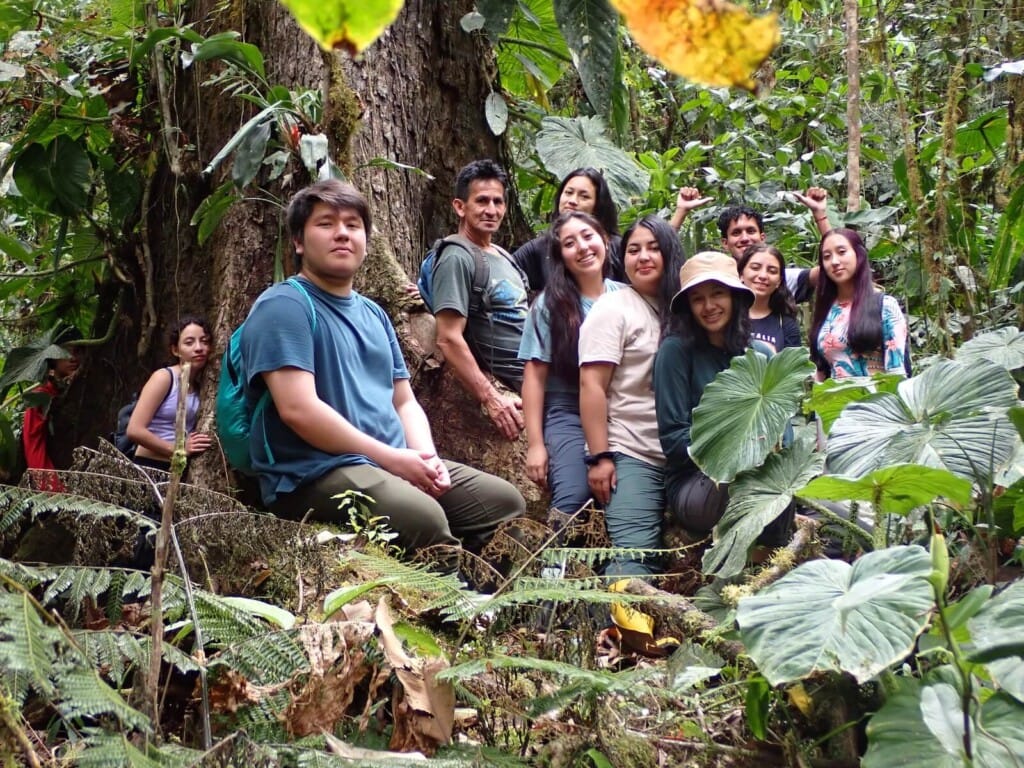
PUCE Laboratory of Professor Rafael E. Cárdenas: https://bioweb.puce.edu.ec/QCAZ/contenido/RafaelCardenas
Scientific Communication: https://www.instagram.com/rafaelcardenas.photography/
Related post
Within the framework of the Project “Preparing Civil Society for the Co-Management and conservation of the Los Cedros Protected Forest – KBA ECU 14” financed by the Critical Ecosystem Partnership Fund (CEPF), we held the introductory workshop on the Birds of the BPLC (KBA ECU14) and of Ecuador in March as part of the forest […]
Twenty community members from the Valle de Los Manduriacos, who are training to be forest rangers, participated in the territory and participatory mapping workshop held in March. The workshop consisted of two phases: the first focused on political mapping, led by José Cueva, a member of the CIPBAT team, and the second on social mapping […]
Representatives from the Los Cedros Forest communities visited Yunguilla to learn about sustainable development, organization, and collective hope. Author Jose Cueva
In February, the second phase of the Community Forest Ranger Training Program began, with 10 young adults from last year’s program joined by 10 new young adults from the communities surrounding the Los Cedros Protected Forest, including Brillasol, Magdalena Alto, Chontal, Magdalena Bajo, Pueblo Unido, Paraíso, Río Verde, Villaflora, and Cielo Verde. Each council received […]

